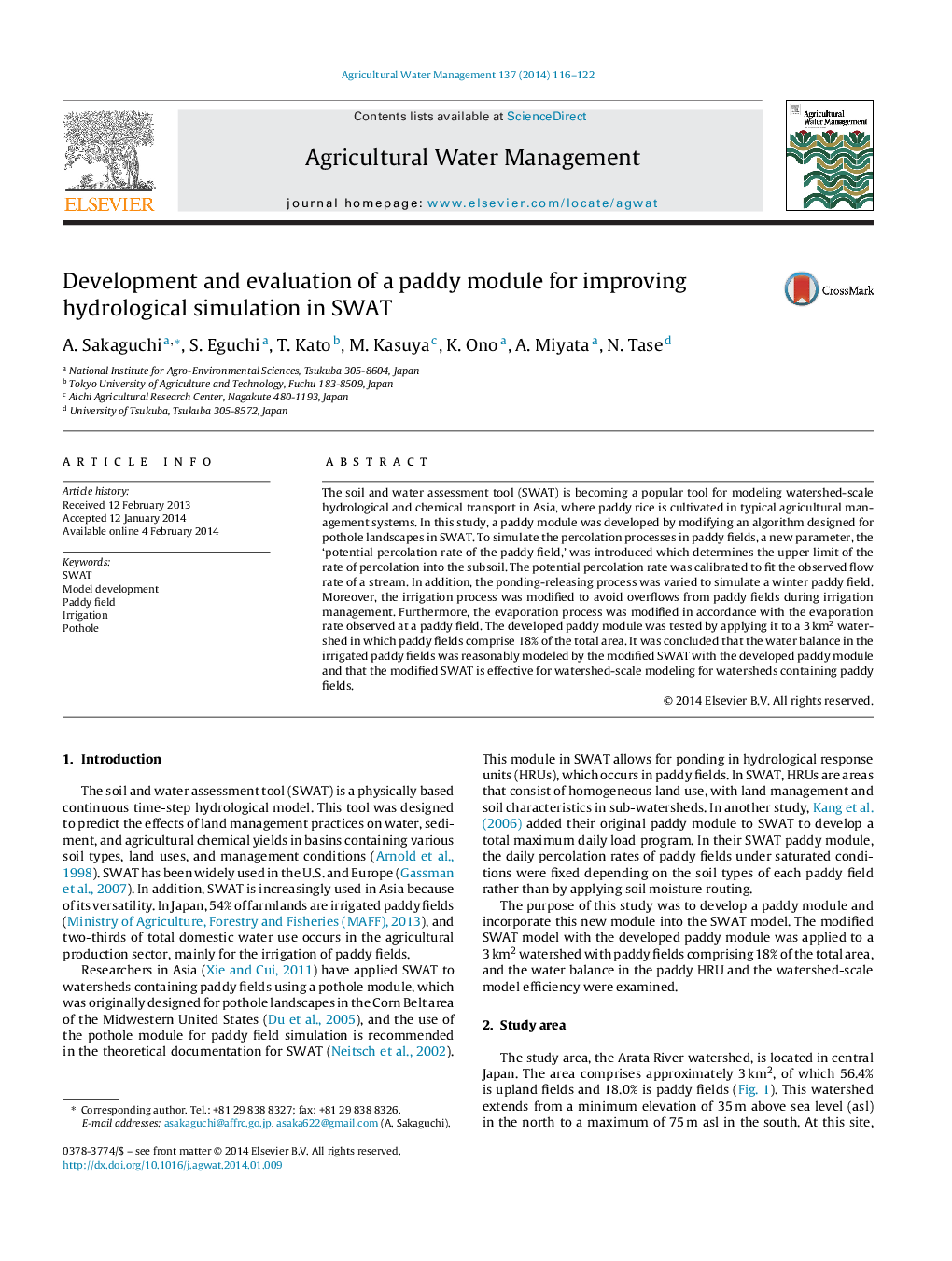| Article ID | Journal | Published Year | Pages | File Type |
|---|---|---|---|---|
| 4478771 | Agricultural Water Management | 2014 | 7 Pages |
•A paddy module was developed for SWAT to simulate the hydrological processes in irrigated paddy fields.•A new fitting parameter, the ‘potential percolation rate of paddy field’, was introduced.•The developed paddy module was tested by applying it to a small watershed.•It was concluded that the water balance in the irrigated paddy fields was reasonably modeled by modified SWAT with the developed paddy module, and the modified SWAT was available for watershed-scale modeling.
The soil and water assessment tool (SWAT) is becoming a popular tool for modeling watershed-scale hydrological and chemical transport in Asia, where paddy rice is cultivated in typical agricultural management systems. In this study, a paddy module was developed by modifying an algorithm designed for pothole landscapes in SWAT. To simulate the percolation processes in paddy fields, a new parameter, the ‘potential percolation rate of the paddy field,’ was introduced which determines the upper limit of the rate of percolation into the subsoil. The potential percolation rate was calibrated to fit the observed flow rate of a stream. In addition, the ponding-releasing process was varied to simulate a winter paddy field. Moreover, the irrigation process was modified to avoid overflows from paddy fields during irrigation management. Furthermore, the evaporation process was modified in accordance with the evaporation rate observed at a paddy field. The developed paddy module was tested by applying it to a 3 km2 watershed in which paddy fields comprise 18% of the total area. It was concluded that the water balance in the irrigated paddy fields was reasonably modeled by the modified SWAT with the developed paddy module and that the modified SWAT is effective for watershed-scale modeling for watersheds containing paddy fields.
